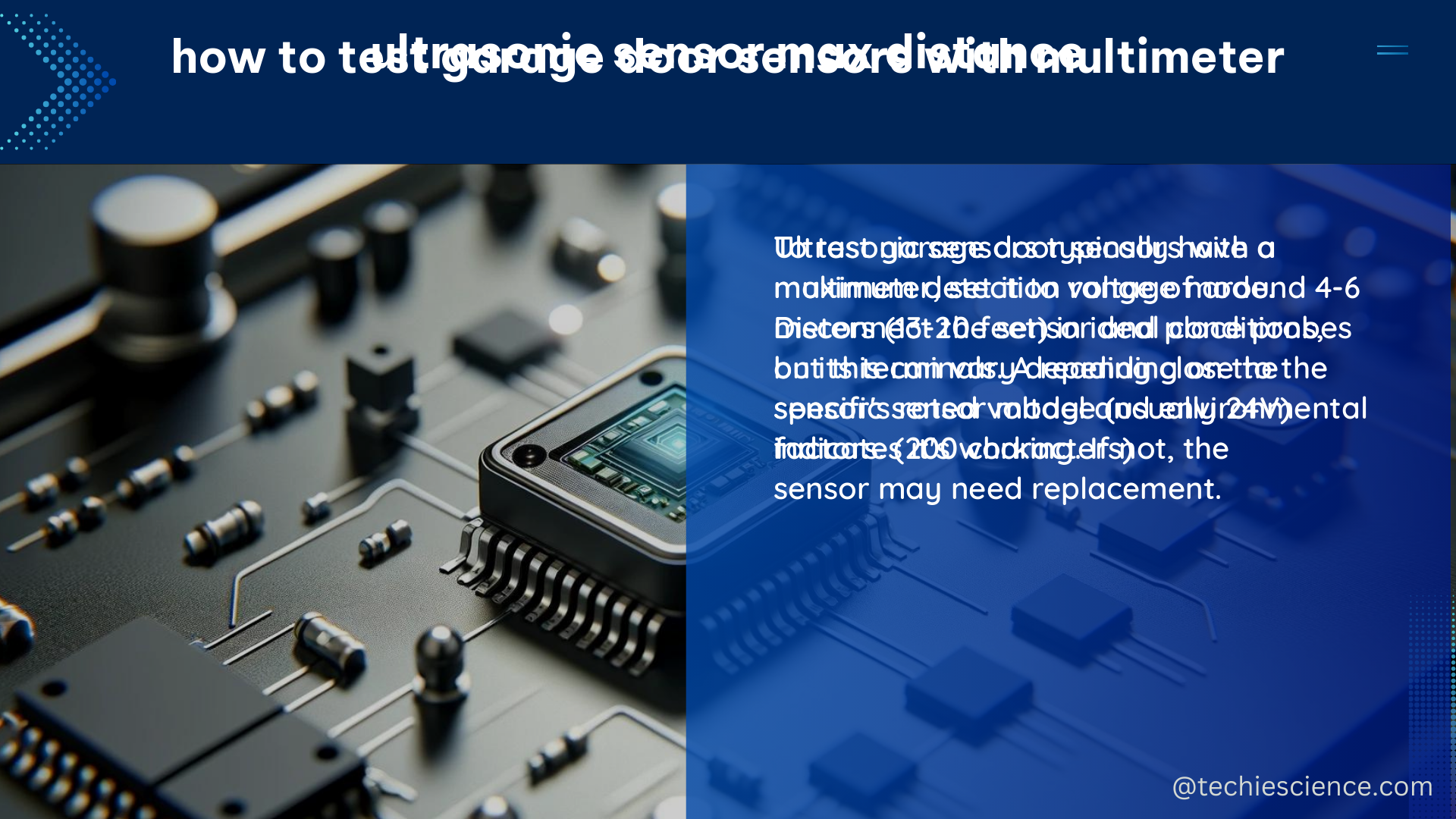The maximum distance of an ultrasonic sensor is a crucial specification that determines its range of operation. This value is typically provided by the sensor manufacturer in the product datasheet and is specified in terms of the maximum distance over which the sensor can accurately detect and measure the distance to a target.
Understanding Ultrasonic Sensor Max Distance
Ultrasonic sensors work by emitting high-frequency sound waves and measuring the time it takes for those waves to bounce back after hitting an object. The maximum distance that an ultrasonic sensor can reliably detect is determined by several factors, including:
- Sensor Frequency: The frequency of the sound waves emitted by the sensor, typically measured in kilohertz (kHz). Higher frequencies generally allow for greater detection distances, but may be more susceptible to interference.
- Beam Angle: The angle at which the sound waves are emitted from the sensor, measured in degrees. A narrower beam angle can result in a longer detection range, but may limit the sensor’s field of view.
- Target Characteristics: The size, shape, and reflectivity of the target object can affect the sensor’s ability to detect it. Larger, more reflective objects are generally easier to detect at greater distances.
- Environmental Conditions: Factors such as temperature, humidity, and the presence of obstacles or interference in the sensor’s path can impact the maximum detection distance.
Ultrasonic Sensor Max Distance Specifications

To illustrate the range of ultrasonic sensor capabilities, let’s examine the specifications of a few popular models:
| Sensor Model | Max Distance | Frequency | Beam Angle |
|---|---|---|---|
| HC-SR04 | 4 meters (13.12 feet) | 40 kHz | 15 degrees |
| SRF05 | 6 meters (19.69 feet) | 40 kHz | 30 degrees |
| MB1000 LV-MaxSonar-EZ0 | 7 meters (22.97 feet) | 42 kHz | 8 degrees |
| PING))) | 3 meters (9.84 feet) | 40 kHz | 30 degrees |
As you can see, the maximum detection distance can vary significantly between different ultrasonic sensor models, with the MB1000 LV-MaxSonar-EZ0 offering the longest range of up to 7 meters (22.97 feet). However, this sensor also has a narrower beam angle of 8 degrees, which may limit its field of view compared to the wider 30-degree beam angle of the SRF05 and PING))) sensors.
Factors Affecting Ultrasonic Sensor Max Distance
The maximum detection distance of an ultrasonic sensor can be influenced by several factors, including:
- Target Material: Smooth, hard surfaces like metal or glass tend to reflect sound waves more effectively, allowing for greater detection distances. Soft, absorbent materials like foam or fabric may reduce the sensor’s range.
- Target Size: Larger objects are generally easier for ultrasonic sensors to detect, as they provide a stronger reflection of the sound waves.
- Sensor Angle: The angle at which the sensor is mounted relative to the target can affect the maximum detection distance. Perpendicular alignment typically provides the best results.
- Environmental Interference: Obstacles, air currents, and other sources of interference in the sensor’s path can disrupt the sound waves and reduce the maximum detection range.
- Temperature and Humidity: Changes in temperature and humidity can affect the speed of sound, which can impact the sensor’s ability to accurately measure distance.
Optimizing Ultrasonic Sensor Max Distance
To ensure the best possible performance from your ultrasonic sensor, consider the following tips:
- Choose the Right Sensor: Select a sensor with a maximum detection distance that meets the requirements of your application, taking into account the factors mentioned above.
- Optimize Sensor Placement: Position the sensor at the optimal angle and distance from the target to maximize the detection range.
- Minimize Interference: Identify and address any potential sources of interference, such as obstacles or air currents, that could disrupt the sensor’s operation.
- Monitor Environmental Conditions: Keep track of changes in temperature and humidity, and adjust the sensor’s calibration or settings as needed to maintain accurate distance measurements.
- Test and Validate: Thoroughly test the sensor’s performance in the actual environment where it will be used, and make any necessary adjustments to ensure reliable operation.
By understanding the factors that influence ultrasonic sensor max distance and following these best practices, you can ensure that your DIY projects and applications leverage the full potential of these versatile sensors.
References:
- Sensor Technology Handbook – OLLINTEC. (2016). Retrieved from http://ollintec.com/fie/sensores/libros/Sensor%20Technology%20Handbook.pdf
- CONTROL VALVE HANDBOOK | Emerson. (n.d.). Retrieved from https://www.emerson.com/documents/automation/control-valve-handbook-en-3661206.pdf
- NUREG-1959 “Intrusion Detection Systems and Subsystems. (2011). Retrieved from https://www.nrc.gov/docs/ML1111/ML11112A009.pdf

The lambdageeks.com Core SME Team is a group of experienced subject matter experts from diverse scientific and technical fields including Physics, Chemistry, Technology,Electronics & Electrical Engineering, Automotive, Mechanical Engineering. Our team collaborates to create high-quality, well-researched articles on a wide range of science and technology topics for the lambdageeks.com website.
All Our Senior SME are having more than 7 Years of experience in the respective fields . They are either Working Industry Professionals or assocaited With different Universities. Refer Our Authors Page to get to know About our Core SMEs.